12 Smart Retail Reports Every Retailer Should Check Daily
July 18, 2025
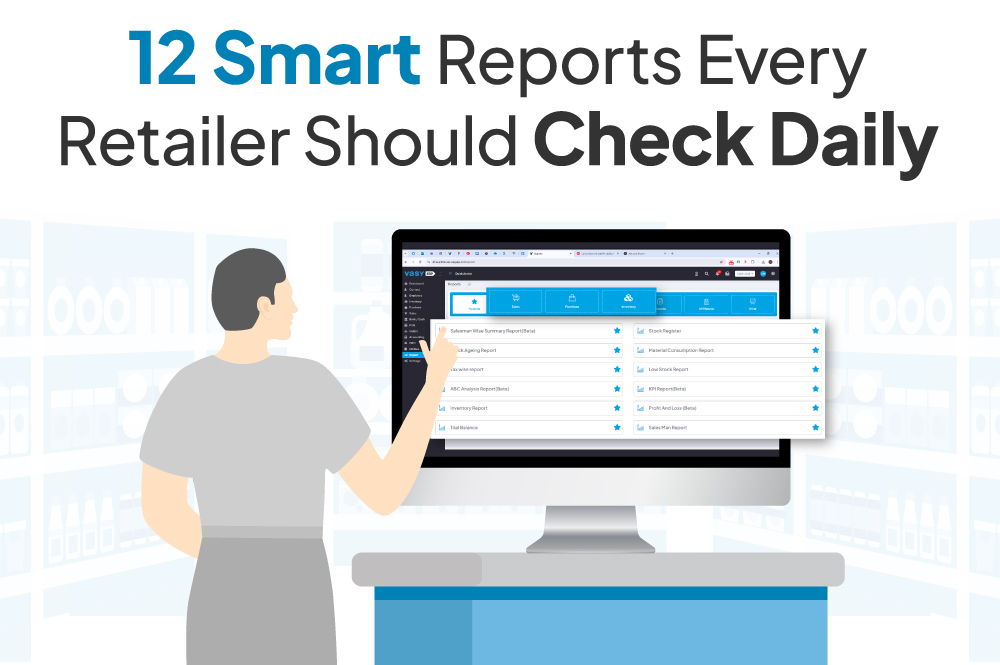
This blog explains the list of smart retail reports that every retailer must check daily to get real-time insights into sales, inventory, employee performance, and customer preferences. These reports helps to boost business operations, and make smarter decisions. The types of report includes: Daily Sales Report, Top-Selling Product Reports, Low Stock & Out-of-Stock Report, Inventory Movement Report, Customer Footfall Report and more.
An accurate daily sales report is a business intelligence tool that provides managers with important sales data. Monitoring data regularly allows you to make informed, data-driven decisions regarding stock ordering, promotions, and employee performance. Whether you are running a small retail store or having multiple store outlets, keeping track of regular operations is important for creating a competitive edge in the industry.
For example, imagine starting a day with multiple questions in mind:
· What were the sales yesterday?
· Which products are out of stock?
· What is the team’s performance?
· Are there any pending orders to be fulfilled?
· Are there any returns that need attention?
So, this is the time when daily sales reports come in. Getting easy access to answers to all the questions in the morning allows you to stay calm, resolve all the issues, and manage all the store operations in a successful manner.
The smart reports provide you with complete details of store performance from sales to inventory, employee performance, and customer behaviour. In fact, retailers who monitor their business data daily tend to be notified about any issues before they become bigger ones.
So, are you missing out on these key reports in your daily routine?
If yes, then this blog will help you with the 12 most important smart reports that every retailer should check regularly and how smart software like VasyERP will help you generate reports easily.
These smart retail reports provide deep insights and help retailers run their stores more efficiently.
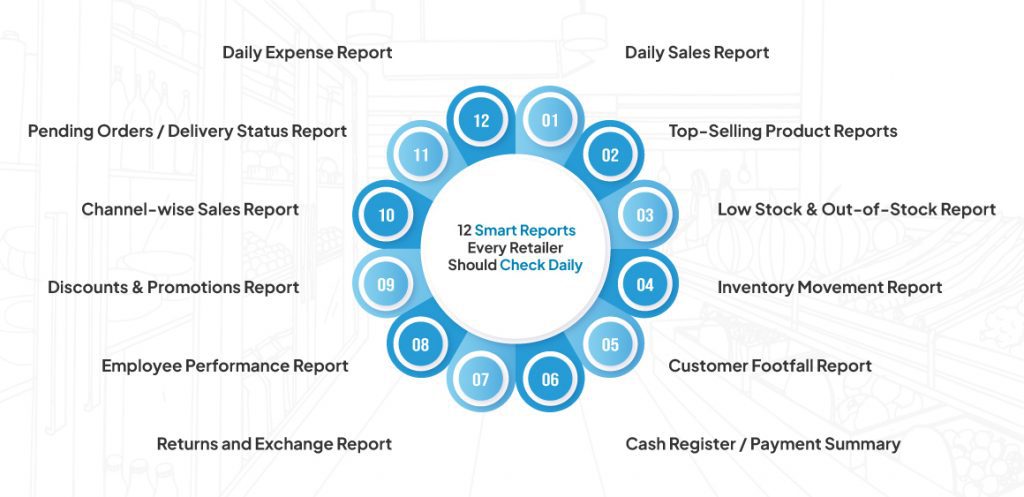
A daily sales report, also known as a reconciliation report, summarizes a retail business’s sales activities for a single day. It monitors important factors like overall revenue, average bill size, number of invoices, discounts offered, items sold, and, in some cases, sales by product or employee.
POS reconciliation techniques are not only useful in accounting. They are one of the most effective methods of POS data reporting. Companies can use these reports to:
The top-selling product report delivers the data regarding the most popular and fastest-selling product. This information is gathered from the total sales volume or revenue generated from the particular product. The top-selling product report offers insights into customer preferences and assists retailers in understanding which product boosts revenue.
Best-selling product report not only delivers the list of the products but also provides details on product name, number of pieces sold, sales revenue generated per product, and gross margin. Access to this data helps retailers in optimizing marketing strategies and inventory management.
Retailers can prefer to use this data for:
Low Stock and out-of-stock reports notify retailers about the products that are low on inventory or are completely out of stock. The report compares real-time stock levels with already set reorder points to ensure that the product is restocked on time.
By using the data from this report, the retailers can gather details on the products below reorder level, reorder quantity suggestions, out-of-stock items, etc. This will help retailers to get rid of the missed sales due to out-of-stock products and ensure that next-selling products are always available to the customers.
Other benefits of low-stock & Out-of-stock reports are:
Inventory movement report helps to track purchases, sales, returns, transfers, etc. It shows how stock levels vary across every location. The report delivers transparency and assists retailers in maintaining inventory records effortlessly.
Why is it crucial? It helps the retailers in maintaining the accurate level of the inventory, avoiding the shrinkage, and monitoring the pace of the fast-moving products and the slow-moving products. It is particularly critical to those stores that have more than one store or warehouse. The inventory movement report allows to:
The customer footfall report shows how many of the customers actually walked into the store during a particular day and also tracks changes over a period of time. This report is important as it helps in exploring customer curiosity, the impact of promotions, staffing arrangement, and helps in better store design. Together with sales it indicates conversion rates. This report does not only count footfalls but also evaluates the store performance.
This report shows a summary of different types of payments made on a daily basis, i.e., cash, credit/debit cards, UPI, digital wallets, and store credits. It helps to reconcile real cash, online payments with sales, reveal the discrepancies, and identify the fraud or human error during cash register checks. Cash register and payment summary report highlights the opening and closing cash balance in the register. This report is required for monitoring the financial department of the store.
The returns and exchange report records everything the customer returns or swaps in a day such as times, SKU, reason, customer’s ID and refund type (cash, credit or exchange). It assists in knowing which products have the highest rate of returns and the reasons why, which provides an insight into after-sale service.
Returns can damage the revenue, stall inventory, and compromise brand trust. A daily tracking of the product helps curb the rate of returns as one is able to know when products are of poor quality, there are misrepresentations of products, or a wrong input by the staff. It also guards against possible internal fraud or misuse. This report helps to learn about customer satisfaction and product quality issues.
Employee performance report compares the performance of individuals by assessing their contribution to various sales and service indicators. It monitors such performance measures as the amount of sales processed, the number of transactions, the average value of a bill, and upselling achievements.
It enhances responsibility, assists in rewarding the best performers, and also identifies the individuals who require coaching. It plays the crucial role of controlling staffing efficiency and providing a better customer experience as a whole. In the long run, such a report will help in the development of a results-oriented culture.
Discounts and promotions report the offerings of discounts, coupon codes, deals, etc. It covers types of offers, usage frequency and their impact on total revenue.This report ensures that promotions are adding value and not costing a waste of the revenues. This helps retailers with an opportunity to optimize the future offer or alter the current suggestion in real-time.
In this report, the daily sales statistics will be separated by each sales channel: brick and mortar stores, ecommerce channels, social media, apps, or marketplace partners. It measures the performance and revenue generation in these touchpoints.
It assists in the distribution of inventory, marketing, and manpower on the basis of performance. The retailers can focus on putting more investment in better-performing channels to maximize returns and reconsider lesser-performing channels. The report gives a 360 degree view of customer’s buying trends and patterns.
You can check pending, dispatched, and partially fulfilled orders in real-time. It also covers orders that have been placed in waiting to be shipped, those that are in transit, and those that are in the last mile glitch. The report guarantees active conversations with customers, quicker issue resolution, and prevents negative feedback. It also helps retailers to align logistics seamlessly.
The Daily Expense Report concludes all the outward needs (both fixed and variable) that the company incurs in the process of the day. These are utilities, wages, logistics, the cost of packaging, the cost of POS, and miscellaneous operating costs. Periodical monitoring of costs controls budgets, prevents excessive expenditure, and makes projects profitable. The retailers are able to easily indicate unwanted or extravagant spending and make necessary moves.
With Smart Retail Reports, retailers can track trends, reduce losses, and optimize daily operations.
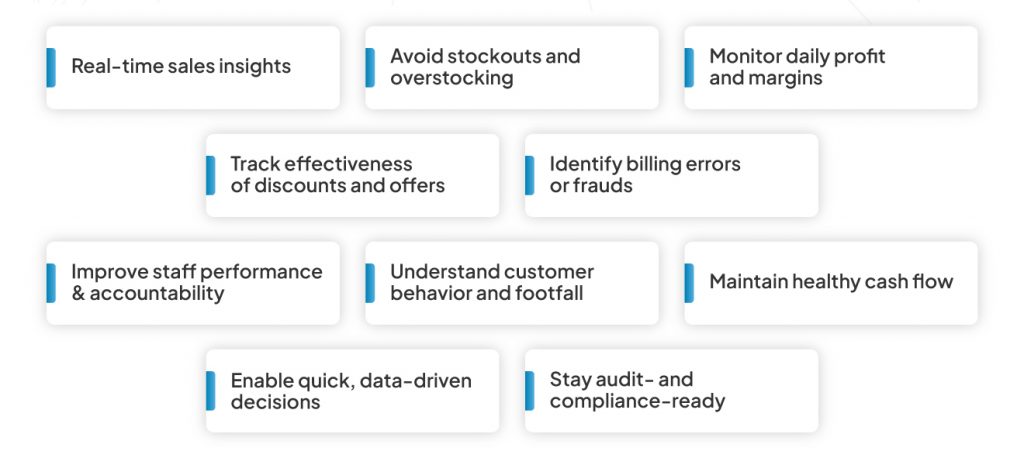
Daily monitoring will allow early warning of an increasing or a falling sales pattern, and retailers will be able to respond quickly by changing the inventory, prices, or personnel focus to take advantage of the positive or correct the negative.
Daily checking of stock levels helps to make sure that you never miss a sale because of out-of-stock items or waste money on overstocking slow-moving products, as it helps to increase customer satisfaction as well as reduce inventory costs.
With daily financial tracking, the retailers will have clear insight to the revenue, costs, and net margins and therefore know their level of profitability and act accordingly, whether to maintain the costs or increase their price strategy.
In daily reports, the retailer knows which promotions are converting or not, so they can run live optimizations, prevent excessive discounting or over-discounting, and increase ROI on all marketing and pricing campaigns.
By reviewing sales and the cash register summary daily using a reliable billing solution, retailers can identify discrepancies or abnormalities that could be due to human error or billing errors, or theft inside a shop, in which case, corrective action can be taken before losses become huge.
A daily observation of the individual performance of employees helps in enhancing accountability, determining training needs, and rewarding the highest percentage performers which leads to greater levels of customer care service, productivity, and general effectiveness of the store.
These are based on the everyday footfall and conversion data that inform the retailers regarding when and in what proportion, the customer shopping behaviour will take place so that they can organise the store layout, promotions as well as the positioning of their staffs accordingly in the appropriate time.
Keeping a track of expenses, payments, and receipts on a daily basis will ensure that your cash flow is positive. It will help to avoid and pay arrears, control working financial assets, organize short-term needs.
The ability to witness daily insights with your fingertips can support you to make quick and carefree decisions based on real data and not assumptions. It makes your company lean and competitive, and customer centered.
It makes your finances and operations very transparent and well organized such that the audit exercise is smooth and streamlined, with prudence on laws on taxes, labor and other compliance.
Smart retail software helps to automate the creation of smart retail reports for easy decision-making. It collects real-time data from multiple sources like POS, inventory management system, sales and CRM to get daily reports automatically. The reports help retailers to save more time, more money, reduce errors, and make faster business decisions. ERP platforms like VasyERP offer customized dashboard, mobile access, and automated alerts to notify about the latest task. So, are you ready to make simplified decisions easily?
These smart retail reports are vital for understanding trends, reducing costs, and boosting retail performance.
Book a free demo with VasyERP today!
Retail reports are data summaries that help retailers to check the daily business activities including sales, inventory management, employee performance, expenses and customer behavior. These reports are important for owners as they help in making informed business decisions and enhance daily tasks.
A retail sales report delivers total sales and revenue made over a specific period. The retail sales report includes data like total revenue generated, number of invoices, average bill value, and sales. The retail sales report helps to evaluate latest sales trends and store performance.
The daily reports for retailers help to monitor overall performance, manage stocks, and make quick business decisions. The most important daily reports for retailers include:
A daily sales summary report provides a quick overview of the store’s activity of the entire day. It includes various tasks such as number of bills, average order value, discounts applied, and product-wise or employee-wise sales performance.
VasyERP offers more than 100+ smart, real-time reports that can be auto-generated and accessed using mobile or web for simplified business management.
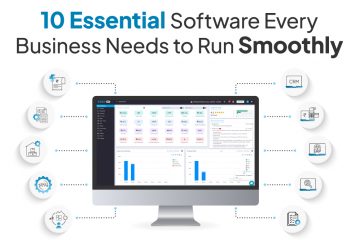
The blog provides brief details of 10 most essential bu...
July 20, 2025
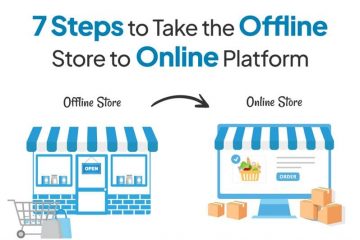
Read this blog and learn the steps to take offline stor...
August 8, 2025
